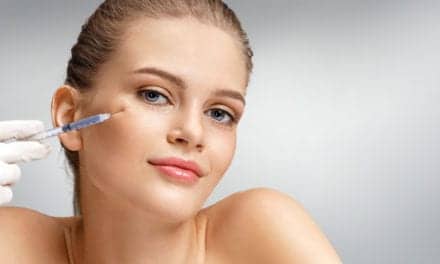To achieve attractive and natural lip enhancement, there must be a balanced augmentation of the upper and lower lips, according to an online survey that examined what the two-dimensional threshold is for perception of artificial-looking lips.
Survey results, which appear in JAMA Facial Plastic Surgery, were culled from 98 participants: 76 females and 22 males (mean age 42 years).
Each participant rated photographs of a female model’s lips that were digitally altered incrementally for the upper lip, lower lip, upper and lower lips and shape of the Cupid’s bow.
Dr. Kim“It is routine in my practice, as well as those of many other facial plastic surgeons, that patients seek natural-appearing results,” says principal investigator Sang W. Kim, M.D., medical director and owner of Natural Face Clinics, with locations in Syracuse, Rochester, and Ithaca, N.Y.
“While extensive literature and studies have been dedicated to determine the ideal or attractive proportions of various parts of the face, there are not many studies dedicated to ascertaining what makes the face appear artificial and ‘overdone.’”
Dr. Kim decided to conduct the study primarily because he feels that lips can be simplified and reduced to two-dimensional pictures.
This is in contrast to other areas of the faces, he says, “that often may require three-dimensional models or even dynamic movements to evaluate the perception of natural or artificial results following cosmetic changes.”
To find the threshold between natual and artifical lip appearance, the researchers determined the measurement of each set of lips that 50% of the observers perceived as being “treated” and for 50% of those they perceived as being “artificial.” The difference in these two measurements was defined as dTA50, which thus became the delineator between natural and artificial lip augmentation results.
“To simplify in practical terms, the measurement of dTA50 is limited to the clinician augmenting the lips prior to looking overdone,” Dr. Kim says.
Click here to view original web page at cosmeticsurgerytimes.modernmedicine.com




Great website you have here but I was wondering if you knew of any user discussion forums that cover the same topics talked about here? I’d really like to be a part of online community where I can get feedback from other knowledgeable people that share the same interest. If you have any recommendations, please let me know. Appreciate it!|